Country Report: Colombia
Under the administration of President Juan Manuel Santos, Colombia is focusing on bolstering the commercial sector. Thanks to the ratification of free trade agreements with 14 countries around the world since 2011, including the United States, foreign direct investment reached a record high of COP 29 trillion (USD 16 billion) in 2012. While this is good news for the pharmaceutical industry, there is still a strong debate about how healthcare in Colombia can be improved.
This sponsored supplement was produced by Focus Reports.
Project Director: Mariuca Georgescu
Journalist: Cameron Rochette
Contributors: Alina Manac & Emilie Laumond
Report Publisher: Ines Nandin
For exclusive interviews and more info, please log onto Pharma.FocusReports.net or write to contact@focusreports.net
COLOMBIA: Confidence in Uncertainty
Under the administration of President Juan Manuel Santos, Colombia is focusing on bolstering the commercial sector. Thanks to the ratification of free trade agreements with 14 countries around the world since 2011, including the United States, foreign direct investment reached a record high of COP 29 trillion (USD 16 billion) in 2012. While this is good news for the pharmaceutical industry, there is still a strong debate about how healthcare in Colombia can be improved. While Colombia enjoys near-universal coverage, a feat rarely seen in Latin America, the financial strain caused by this broad coverage has created the need for change. The industry is watching as the country enters a period of transformation.

Código-Huella-Laberinto (Fingerprints) by Maria Ruiz, Courtesy of Janssen Colombia
"The title of your report is 'Confidence in Uncertainty'," remarked Alejandro Gaviria, Minister of Health and Social Protection of Colombia, as he sipped a freshly brewed tinto coffee from his office in the historic Candelaria district of Bogotá. "Ultimately, it is my goal to foster more confidence in the system and among all stakeholders in the health industry. Therefore, I hope that your next report in Colombia will be called 'Confidence and Certainty.' Colombia is in an exciting state of change, and the country has great potential as one of the most promising emerging markets in the world today."

Alejandro Gaviria, Minister of Health and Social Protection
Colombia has experienced economic improvement in recent years. Since 2010, the country has shown an average of 5.1 percent growth in GDP, placing it well above the Latin American average. Colombia's trade balance increased from $24.6 billion in 2002 to $119.3 billion in 2012. The country's foreign currency rating was recently upgraded by credit agency Standard and Poor's from BBB- to BBB, increasing the country's attractiveness for foreign direct investment (FDI). The country's debt to GDP ratio has decreased from 40 percent in 2010 to 33 percent today.
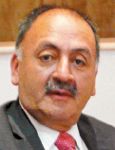
Rafael Romero Piñeros, President Commission 7 â Chamber of Representatives
The pharmaceutical industry is no exception. Business Monitor International has estimated an increase in pharmaceutical sales from COP 7.55 billion (USD 4.2 billion) in 2012 to COP 8.07 billion (USD 4.45 billion) in 2013, suggesting that there is growth in Colombia, but at a rather slow rate. This may be indicative of potential but it is unclear if Colombia will experience a surge anytime soon.

Blanca Elvira Cajigas, Director General INVIMA
FROM '93 TIL INFINITY?
President Santos appointed economist Alejandro Gaviria as the new Minister of Health and Social Protection in September 2012. Gaviria's priority has been to create health reform that would introduce the next episode of Colombia's payer system, following the introduction of Law 100 in 1993, which extended health coverage to nearly all of the country's population.

Francisco de Paula Gomez, Executive President, AFIDRO
This Law created a mixture of private and public health insurance providers, or Entidades Promotoras de Salud (EPS). While this system brought about near-universal health coverage, some argue that the EPS has evolved over the last twenty years into a business, rather than being a basic right guaranteed to all Colombians. Many accuse the EPS of corruption and mishandling finances.

Mr. Rodrigo Arcila Gomez, Executive Director ANDI
Gaviria attributed the system's financial stress to an increase in recobros, or requests for reimbursement of drugs and treatments not included in the Plan Obligatorio de Salud (POS), which lists all medications to which Colombians are entitled. Insurance providers have struggled to reimburse patients for these treatments, and lack of resources reached a breaking point in 2009 when the Colombian government declared a Social Emergency Crisis and passed a number of tax laws in 2010 to save the system. However, this did not build a long-term solution.

Tecnoquimicas is permanently commited to applying the latest tecnologies and highest standards in its manufacturing processes. (Soft gel capsule production area).
Colombia's health system operates under two schemes, contributory and subsidized. Forty percent of the Colombian population holds formal employment and receives health insurance through the contributory scheme that is paid for by both employees and employers, granting access to private hospitals.The remaining 60 percent of the population, who do not hold formal employment, are subsidized by the public health system, which is generally of lesser quality.

Michael Himmel, General Manager Andean Region, Takeda
One of the biggest changes Gaviria has proposed is the replacement of the EPS with a single-payer publicly funded "Fondo Unico." The contributory and subsidized systems were combined in 2012, and both would operate under the Fondo Unico. "With this new fund, we need to have the best control of resources possible, which will re-establish the legitimacy of the system. It can be seen as a 'fund of investment'," said Gaviria. Another change could replace the POS with "Mi Plan," which would remove many financially crippling items from the POS such as cosmetic and aesthetic treatments.
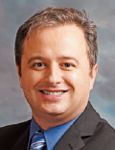
Mario Sturion, General Manager North Latin America Cluster, Janssen
"The Law 100/93 allowed some functions of the State to be delegated to the private sector," said Gaviria. "This ruling essentially created a virtual fund. Twenty years later, one can see that it is not sustainable anymore. We realized that the State has to take on some functions."
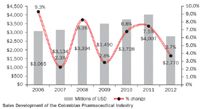
Sales Development of the Colombian Pharmaceutical Industry
According to Rafael Romero Piñeros, President of the Seventh Commission of the Chamber of Representatives, which addresses a number of social issues including health, a purely publicly funded program would allow resources to be directly reinvested into services such as primary care and disease prevention. The system had previously essentially existed as a triangle: "the patient was paying for a service and then charging it back to the State," commented Romero. "That intermediate step will cease to exist, and therefore corruption will disappear. The success of the reforms will depend on the strength of the government and the collaboration of many different actors."

Rolf Hoenger, General Manager Roche
LICENSE TO PILL
As part of the ongoing restructuring of Colombia's healthcare model, the National Institute of Food and Drug Surveillance (INVIMA), Colombia's food and drug regulatory body, has undergone major transformation. The Institute was certified in 2010 as one of five National Regulatory Authorities of Regional Reference by the public health institution Pan-American Health Organization in Latin America. "This positions INVIMA as a national regulatory authority within the international sanitary environment," noted Dr. Blanca Elvira Cajigas de Acosta, director general of INVIMA.

Norton Oliveira, General Manager MSD
INVIMA enforces standards set by the Ministry of Health. Biotechnology regulations, which have never existed in Colombia before, have been discussed for years but never fully implemented by the Ministry. Francisco de Paula Gomez, president of the Association of Research and Development of Pharmaceutical Laboratories (AFIDRO), says that this has been a long time coming. "We are talking about a sanitary regulation and the minimum set of regulations must be enforced according to the prerequisites of the World Health Organization (WHO)," he said. "I believe that in order to promulgate growth in this area, there needs to be a greater number of companies and medicines in the market, particularly innovative biotherapeutic medicines and high quality biosimilars, and not just some questionable medicines whose origins are in some process of biotechnology."

Mauricio Botero, General Manager Sanofi
TOP BILLING FOR A PHARMERGING MARKET
Michael Himmel, general manager Andean Region of Japanese pharmaceutical company Takeda, noted that "the difference between Colombia and other Latin American markets basically lies in the comparative de-centralization of key customers over the country. Being successful in Colombia means being able to adapt to this structural and geographical reality. The fact that Colombian healthcare practitioners are professional and very well prepared makes this task manageable." The evidence of this de-centralization is seen in that pharmaceutical companies are found not only in Bogotá but throughout the country. Colombia's flagship pharmaceutical company, Tecnoquímicas, is based in Cali, as well as multinationals such as Johnson & Johnson, or Reckitt Benckiser. Procaps, another of Colombia's biggest pharmaceutical companies is headquartered in Baranquilla. Colombia's pharmaceutical market is also unusual in that a number of the top companies in the country are domestic. This may be an indicator of the growth potential for local companies looking to expand in the Colombian market.

Gloria Stella Gonzalez Perez, President Advance Scientific
Pharmaceuticals contribute roughly 2.5 percent of the Colombian economy and the majority of companies in the country have been steadily increasing profits. Rodrigo Arcila Gomez, executive director of the Pharmaceutical Chamber of the National Business Association (ANDI) notes that "the problem of insecurity has decreased, external debt is controlled well, and foreign investment is increasing. For the time being, the pharmaceutical sector is importing more than exporting. However, the cost of production is really low," which, according to Gomez, is a solid advantage for Colombia.
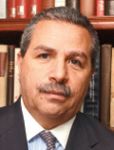
Alberto Bravo Borda, Executive President ASINFAR
The fact that all three credit agencies have upgraded Colombia's government debt to investment grade, according to the Central Intelligence Agency Factbook, is an indication of an improving economy. Mario Sturion, general manager North Latin America cluster of Janssen said that "Colombia enjoys free trade agreements with many countries around the world. As a result, Colombia will be more aligned with international standards and regulations moving forward. Colombia also has a history of strong people development with universities, international programs and research institutes that nurture a well-prepared labor force. Colombia is a key country of focus for Janssen in Latin America." According to Sturion, Colombia offers "a stable political and economic environment, centers of excellence that can properly conduct international clinical trials and respect for intellectual property rights and innovation."

Emilio Sardi A., Executive Vice President Tecnoquimicas
Colombia also has geographic advantages. "To be in Colombia is an advantage because it is an entry door for Central America," said Gloria Stella Gonzalez Perez, president of local pharmaceutical company Advance Scientific Group. "If I am in Asia, or in Europe, Colombia is very strategic in terms of logistics. Similarly, for investors, the fact that Colombia has harbors in two different oceans is an advantage for importing raw materials or technology. Moreover, Bogotá has many advantages: its infrastructure, talented people, and good training programs for the pharmaceutical industry."
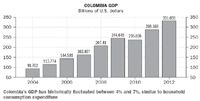
Colombia’s GDP has historically fluctuated between 4% and 7%, similar to household consumption expenditure
While numbers indicate slow growth, the pharmaceutical industry of Colombia has much room for potential given the country's economic improvement. Colombia's GDP has grown at a faster rate than Latin America's over the last 25 years. A quick walk throughout any of Colombia's major cities demonstrates a real sense of development that might not have existed as little as 20 years ago. However, even with the qualities for which stakeholders have accounted, there are still more mountains to climb to ensure Colombia's strong position in the global pharmaceutical market.

Ensuring quality in all its processes and products is a priority in Tecnoquimicas. (Quality control laboratory in one of the manufacturing plants located in Cali, Colombia)
THE INNOVATOR'S DELIGHT
Clinical trials have become increasingly important for pharmaceutical companies in Colombia. For Rolf Hoenger, CEO of Productos Roche S.A., innovation is key. "Innovation guarantees that you are competitive in the market," Hoenger stated. "As long as you produce and bring new molecules to the market, you can be very successful. This is especially true in Roche's case where there are clearly differentiated products. Innovation always pays off because you always bring something to the market that is asked for."
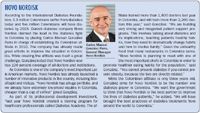
NOVO NORDISK
Hoenger also cites clinical trials as a critical part of the Colombian pharmaceutical industry. "Clinical trials provide a benefit for the industry to further develop, but also for the government because all these patients are treated free of charge," continued Hoenger. "Furthermore, these patients get access to the latest in existing medicines and the doctors obtain experience in good clinical practice. It is a win-win for everybody. You have doctors who are trained very well in Colombia, which makes the country reliable for clinical trials."

Maria Cristina Ãlvarez, Country President, NOVARTIS
The U.S. pharmaceutical company Merck Sharp & Dohme (MSD), which runs one out of every three clinical trials in Colombia, is also taking advantage of this reliability. Norton Oliveira, general manager of MSD in Colombia, said that the company's "significant investment in clinical research in Colombia results in the generation of employment, continuous education to the medical community, support to research units and programs, and technology transfer." The affiliate also runs an MSD data management center, which consolidates data from clinical trials and pharmacovigilance programs for all of the Americas, including the United States.
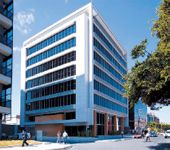
Novarties facilities in Bogotá, Colombia, an example of the company’s commitment to the environment
MIXING UP THE MEDICINE
Acquisitions have also played a role in the dynamics of the Colombian pharmaceutical industry. The most recent significant example was the purchase of local generics manufacturer Genfar by Sanofi, placing Sanofi as the market leader. "The local expectation is to consolidate our number one position in the total market, be the number one generics company and place Colombia as a hub for generics activity in the Andean and Central American region," said Sanofi Colombia general manager Mauricio Botero. "Genfar currently has large operations in Ecuador, Peru, Venezuela, and Central America. Revenues are $150 million, and $70 million are in Colombia alone. There are many expectations to consolidate Sanofi as a leader in Colombia in generics and accelerate penetration in other countries."

Marisol Sánchez, Executive President ANDI - Camara de Proveedores de la Salud
As generics play an important part in the pharmaceutical industry due to their affordability and accessibility for many Colombians, this strategic Genfar purchase will allow Sanofi to retain market leadership. Chilean pharmaceutical company Recalcine's recent purchase of Colombian Lafrancol implies a strategic integration and synergizing of both companies' best practices as a means of staying competitive in the Colombian market. Acquisitions of brands or plants are becoming more commonplace; in 2012, Brazilian pharmaceuticals company Eurofarma acquired a plant from Merck, Sharpe & Dohme (MSD) in Colombia as a means of expanding their presence in the country.

Katherine Eissner, General Manager Andean Region Hospira
PAYING THE COST TO BE THE BOSS
While multinationals often enjoy success in Colombia, questions often arise about situations international competitors create for local pharmaceutical companies. Despite the fact that 70 percent of demand for products in both the retail and institutional markets come from domestic brands or generics, domestic drug makers in Colombia are being overpowered by the presence of multinationals. "Multinational companies, especially those with major biotechnology products, have seriously affected the finances of the healthcare system," said Alberto Bravo Borda, executive president of the Association of Colombian Pharmaceutical Industries (ASINFAR). "A small number of units are monopolies, either because they are protected by patent or data protection laws, or because they have no competitors on the market because of INVIMA, who have closed the door for biosimilar products in the country."
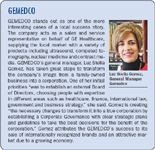
GEMEDCO
Another significant issue that has arisen from the presence of multinationals is the pricing of drugs in Colombia. Emilio Sardi, executive vice president of local pharmaceutical manufacturer Tecnoquímicas, said that "some companies have sold their products here at much higher prices than those in other countries, which is ridiculous to accept. When the government is paying, they have a right to intervene in the setting of prices. Such a change will hurt companies that have been taking advantage of the country and may open up a field for competition where companies like Tecnoquímicas or others may have access to a new market."
Sardi does recognize the potential of Colombia as a place to do business: "The Colombian market is tough, albeit growing. Companies that do well here can do well in many other places. If the government enforces rational regulations for the health system, there is a field to grow here. There are people capable of performing high-quality research and development in Colombia, but they have not really been used or given the opportunity to prove their capabilities."
If Gaviria implements a new system of reference pricing that reduces the cost of drugs, local companies may become more competitive. As the strongest national pharmaceutical company, Tecnoquímicas enjoys a significant percentage of market share in Colombia. The company purchased the Hidraplus and Wasser Chemical brands from Baxter in December 2012 as part of their vertical integration strategy. With acquisitions like these, Sardi hopes to regain the title of market leader in Colombia, a position that seems to be highly sought after by Tecnoquímicas, Lafrancol and Sanofi.
ROBOT ROCK
Medical devices are one of the most profitable niches in Colombian health. Marisol Sanchez, president of the Camara de Proveedores de Salud noted that "the medical device sector correlated to roughly COP 2.01 trillion (USD 1.1 billion) in 2012, with more than 10 percent growth from last year. Ninety percent of medical devices in Colombia are imported. However, national medical devices companies have been successful, and some of them are even exporting to Central America and other parts of South America." To put this in perspective, the medical device market in Colombia is bigger than that of Mexico, where the pharmaceutical industry has traditionally been stronger.
The Colombian medical device sector has a solid following despite its high price tag. Carlos Alberto Florez Gonzalez, Andean general manager of medical device company Medtronic Latin America, said that "Colombia has well-trained doctors working in very well-developed hospitals, and they really understand the benefits of this new technology. These doctors are also continuing to improve their knowledge by frequently visiting hospitals and participating in different local and international congresses, where they can learn about new developments in technology and bring this information back to Colombia. They understand the ultimate benefits for patients."
Florez founded the Colombian affiliate of Medtronic in 2008 and has led the affiliate in rapid growth. Medtronic Colombia initially used a distributor network to sell products, but is transitioning to a more direct presence in the country with a brand image focus. Medtronic Colombia also runs operations in Venezuela and Mexico. "Now is the time to leverage the knowledge that we have acquired here in Colombia in countries like Mexico to move to a more direct operation, where the market is still under penetration and development," said Florez. "Colombia is very important and is one of Medtronic's countries targeted for solid future growth alongside the traditionally strong markets like the United States, Japan and Western Europe." Florez expects this growth to come from new technologies, such as the Symplicity™ therapy for renal denervation, and Melody, a transcatheter pulmonary valve therapy that combines the use of medical devices and medicines.
Despite the availability of these devices, patient access still remains a problem in Colombia. Medtronic works with the Colombian government to ensure patient access. "The organization is internally developing a program called Patient Access Acceleration (PAA) which will accelerate access for patients in Colombia for various procedures. Colombia offers very high potential for such technology because Medtronic is still penetrating most of its technologies in the country."
Rafael Arango, director general of Colombian pharma and medical device success story Grupo Amarey, uses an entire department dedicated to researching key industry trends to determine which medical devices are best to import into Colombia. He also sends employees to congresses worldwide to learn about the best investment opportunities. Arango pointed out that "in terms of devices, minimally invasive surgery is the biggest trend in the industry. Invasive surgery is now smaller, less traumatic, and recovery is much faster." He is most excited about the potential of the da Vinci robot in Colombia, produced by U.S. manufacturer Intuitive Surgical. Arango described this device as "the 'Microsoft' of surgical equipment. Other companies are introducing technologies compatible with Intuitive. If Amarey can manage that platform in Colombia, the Group will be riding the wave of new laparoscopy and in general the newest minimal invasive approaches in the region."
Katherine Eissner, who became general manager Andean region of pharmaceutical and medical device company Hospira in January 2012, has a similarly positive outlook on her company's ability to supply the Colombian market. "Hospira is the strongest injectable provider in the United States and has a heritage of antibiotics, oncology and other segments," she said. "The Colombian population will have the opportunity to obtain best in class injectables in terms of price, quality and accessibility. Innovation does not necessarily imply high cost; it means cost-benefit, i.e. what I am willing to pay and why. Why is the system willing to pay, what are the benefits for the system and patients? I think that the whole sector understands that the patient ultimately makes decisions and is starting to understand better his/her rights and making choices based on that."
LEARNING FROM HISTORY
While the future remains as a hazy cloud for the pharmaceutical industry in Colombia, the country keenly awaits the outcome of reform that could put health care back on track to be accessible and affordable for everyone. Colombia's near-universal health coverage may place the country among the best in the region, but leadership has come at a price. Under Minister Gaviria, the imminent health reforms aim to reduce corruption, make drugs more affordable, and allow pharmaceutical companies to continue on their paths to success.

.png&w=3840&q=75)

.png&w=3840&q=75)



.png&w=3840&q=75)



.png&w=3840&q=75)











